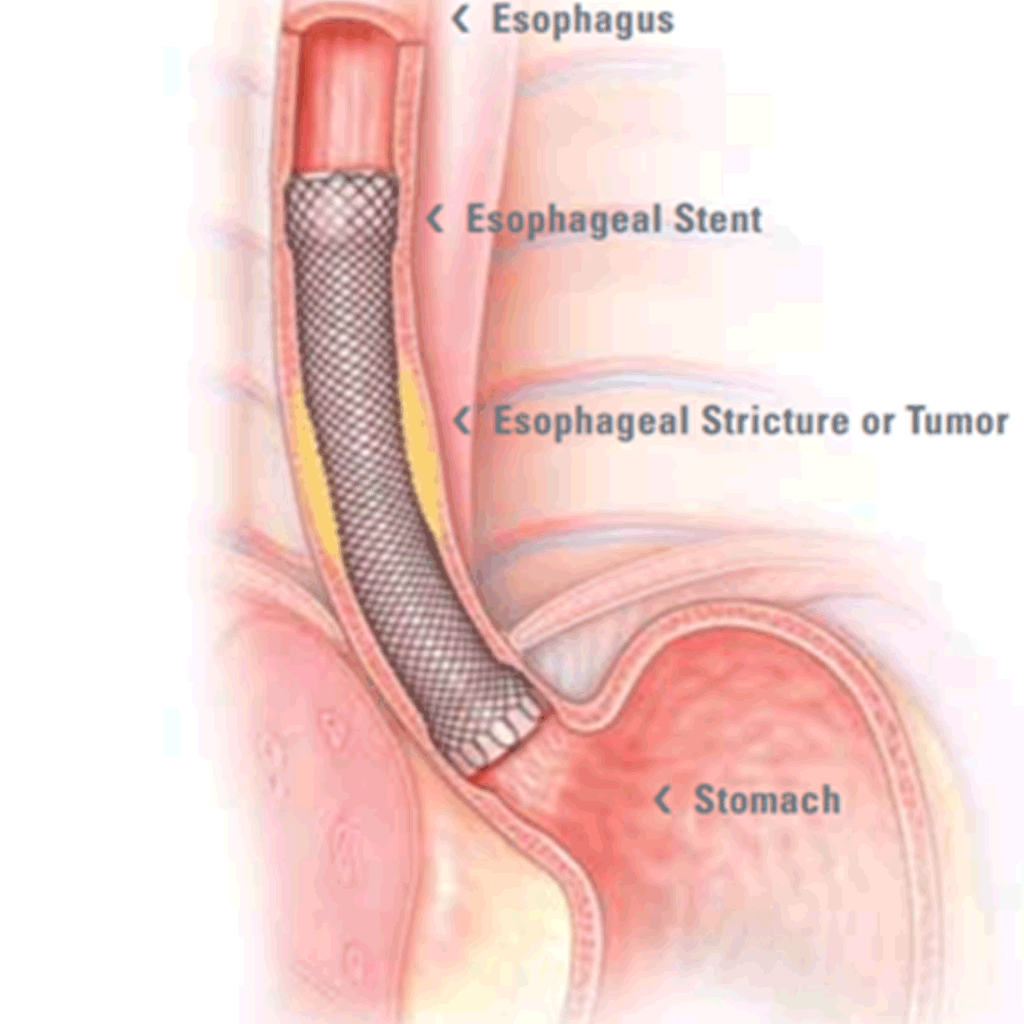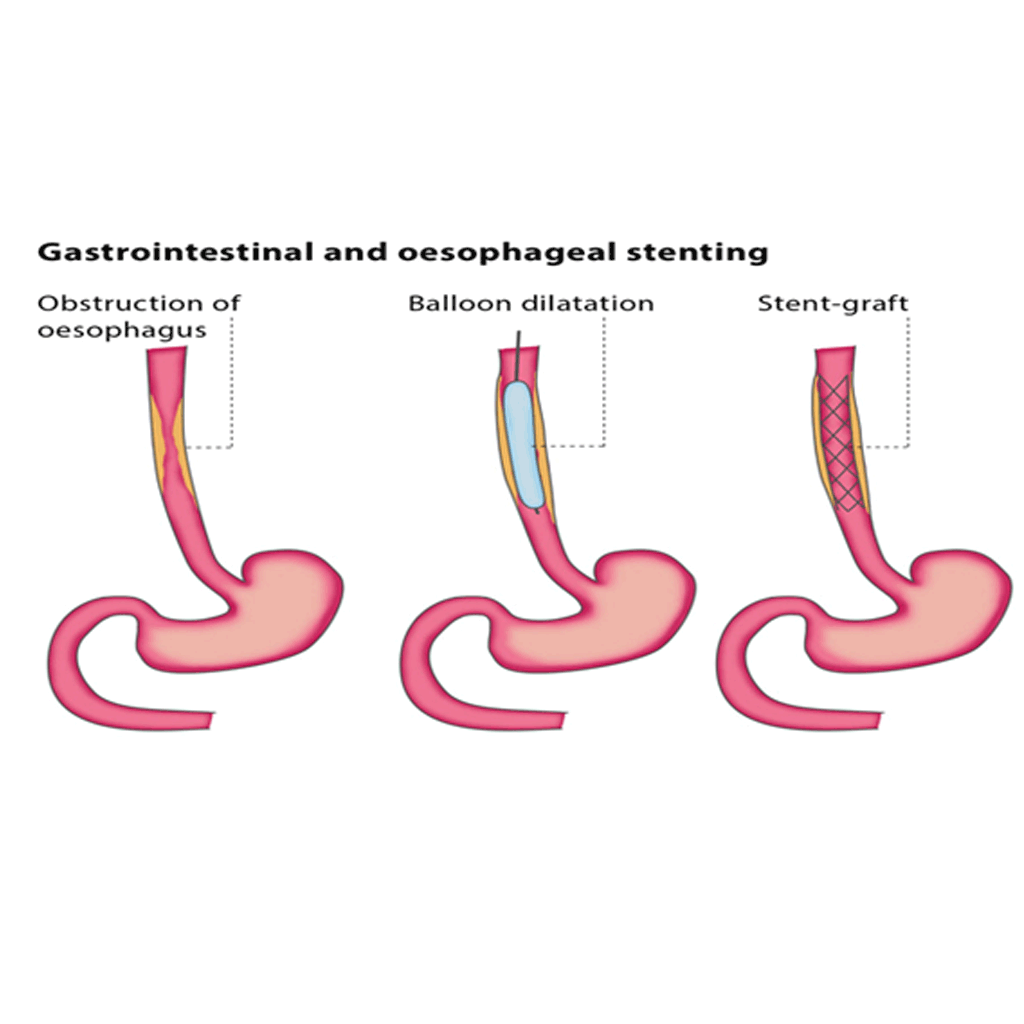GASTROINTESTINAL AND OESOPHAGEAL STENTING
Patient Education Material
Stenting is the placement of a stent inside your body. A stent is a mesh tube made out of metal that can be inserted into a passage in the body (such as a vein) to act as a skeleton and keep it open. You may be advised to have a stent placed if you have a blockage in your gullet or bowel which is caused by a tumour.
Symptoms of a blockage in the gullet, stomach or small intestine include being unable to consume an adequate amount of food, nausea and vomiting. If you have a blockage in your large intestine you may find it difficult to go to the toilet.
A stent may also be used to keep a fistula open, which is a connection between the gastrointestinal tract and the organs or tissues around it.
Before the procedure, the interventional radiologist will outline the obstruction with contrast material under X-ray. You will have a local anaesthetic in your throat and be under mild sedation for the procedure. The interventional radiologist will introduce a device containing a wire and a catheter through your mouth and to the blockage in your gullet or small intestine. After the narrowing has been reached with the wire, a tiny balloon will be introduced and will slowly expand to dilate the area around the blockage.
Once the area has expanded enough, the interventional radiologist will implant the stent to bridge the blocked segment and keep it open. Sometimes a second dilation with a balloon is needed to help the stent expand better.
If the blockage is in your large intestine, the procedure will be performed through your anus, but otherwise, the steps will be identical.
If you are being treated for a fistula, a stent covered with a membrane will be placed across the fistula before the procedure to protect it from the contents of the intestines.


The aim of stenting for blockages in the gullet caused by a tumour is palliation, meaning the procedure is carried out to relieve any symptoms or pain caused by the blockage. Your symptoms should be relieved after the procedure and you will be able to eat normally again.
If you have an acute obstruction in your large intestine, meaning the blockage must be treated straight away, you may be advised to have this procedure as a bridge to surgery. This means you can choose to have the necessary operation later and avoid the risk of emergency surgery.
If you have a fistula, this procedure will protect it from the contents of your intestines and will allow the fistula to seal over time.
Kindly contact:
- One PKLI Avenue, DHA, Phase-6, Lahore, Pakistan.
- info@pkli.org.pk
- +92 42 111 117 554

